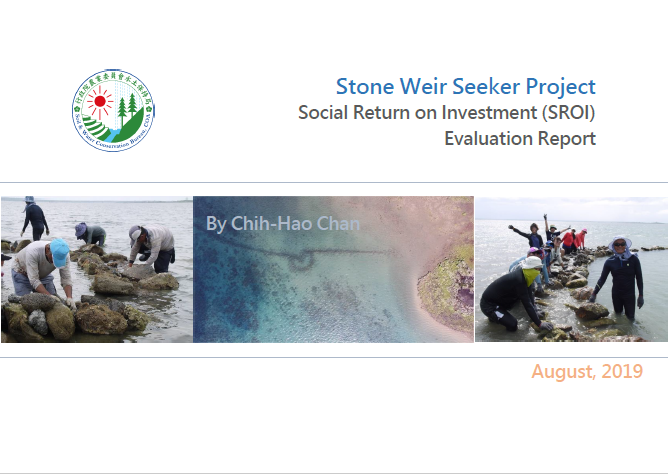Reports Database:
Stone Weir Seeker Project

The Stone Weir Seeker project was proposed by Fu-Tzu Yang, a member of the RunAway From Island team, to be part of the Rural-Young Project led by the Council of Agriculture’s Soil and Water Conservation Bureau (hereafter referred to as the SWCB). The stone fish weirs of Penghu were the main focus of the Stone Weir Seeker project, which covered four areas in its implementation: a stone fish weir restoration matching mechanism, training for youths who wish to become Masters at restoring stone weirs, a database of stone weirs, and marine education and ecotourism.
This study adopts the SROI methodology to review the social impact of the Stone Weir Seeker project from February 1, 2017 to August 31, 2018 from the perspective of stakeholders. After engaging with stakeholders, it was found that the main influence of the project lay in its ability to provide a younger generation of people with the opportunity and means to gain a better understanding of stone weirs, which are a part of Penghu’s local fishing culture. The project also documented stone weir techniques in a systematic way, allowing the gradually disappearing craft of stone weir restoration to be passed down. At the same time, the project has built a deep relationship with local communities. It is hoped that restoring stone weirs can help the residents of Penghu recall their memories of the ocean and their affection for it, as well as increase community cohesiveness and identity, so that residents will more actively participate in initiatives to maintain the nearly 600 stone weirs around Penghu in the future.
A comprehensive survey and analysis of this study shows that the Stone Weir Seeker project has created the equivalent of NT$16.66 in social value for every NT$1 invested. The sensitivity analysis placed the result between NT$3.99 and NT$67.42. We also discussed the result and the stakeholder feedback received during the process of the study with the RunAway From Island team and SWCB, the agency that subsidized the project, in order to look for ways to improve and optimize the project. This was intended to allow adjustments and corrections whenever needed during the implementation process, and to maximize the project’s impact, social value, and benefits.
